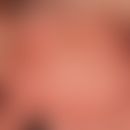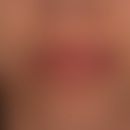Synonym(s)
HistoryThis section has been translated automatically.
DefinitionThis section has been translated automatically.
BRBN (also known as Bean syndrome) is a rare (about 200 cases in the world literature), congenital, androtropic, sporadically occurring disorder characterized by numerous, diffuse, cutaneous and internal VM. Predominantly mild courses, very rarely fulminant or fatal forms.
The independence of the clinical picture is doubted by some authors due to the clinical agreement with generalized glomangiomatosis, despite different histology and aetiology.
You might also be interested in
EtiopathogenesisThis section has been translated automatically.
ManifestationThis section has been translated automatically.
LocalizationThis section has been translated automatically.
The vascular malformations occur on all skin and mucosal surfaces and tend to aggregate and become hyperkeratotic, with a predilection for the palms of the hands and soles of the feet. Over time, hundreds of lesions may be found. Affected individuals often have a single congenital large VM, called a dominant VM (>10 times the size of all other visible lesions), which is the first manifestation of BRBN syndrome.
Clinical featuresThis section has been translated automatically.
Integument: A few or up to more than 100 differently sized, blue-black, subcutaneous or cutaneous, sharply defined papules or nodules of soft to rubbery (naming!) consistency. Some of the papules can be completely compressed.
Oral mucosa: Angiomatous lesions are possible on the hard palate as well as in the buccal mucosa.
Extracutaneous manifestations: Frequent angiomas in the gastrointestinal tract (especially stomach, intestines) with risk of bleeding. Angiomas in the liver, spleen, gall bladder, kidney, pleura, lungs, CNS and musculature have been described (mostly asymptomatic, only detected during extensive diagnostics).
DiagnosticsThis section has been translated automatically.
Blood count (anemia?), Haemoccult test, possibly gastroscopy and colonoscopy, upper abdominal ultrasound.
HistologyThis section has been translated automatically.
DiagnosisThis section has been translated automatically.
Pathognomonic for BRBN syndrome are gastrointestinal lesions (grape-shaped mucosal vein nodules), which are documented by endoscopy, colonoscopy or magnetic resonance imaging. These are usually located in the small intestine and can cause bleeding, intussusception, intestinal tortuosity and intestinal infarction (Ballieux et al 2015). Bleeding from intestinal lesions leads to chronic iron deficiency and anemia, requiring repeated iron supplementation or blood transfusions.
Differential diagnosisThis section has been translated automatically.
Complication(s)This section has been translated automatically.
TherapyThis section has been translated automatically.
No known causal therapies.
Clarification of mainly gastrointestinal organ involvement; regular monitoring and, if necessary, symptomatic surgical treatment in collaboration with surgeons and internists.
An individual case report exists on the use of "low-dose sirolimus" as an antiangiogenic principle. This includes regression of existing intestinal bleeding.
Skin changes can be removed surgically or by laser if necessary.
LiteratureThis section has been translated automatically.
- Apak H et al (2004) Blue rubber bleb nevus syndrome (BRBNS) associated with consumption coagulopathy: treatment with interferon. Dermatology 208: 345-348
- Bean WB (1958) Vascular spiders and related lesions of the skin. Charles C. Thomas (ed.), Springfield (IL), pp. 178-185
- Bedocs PM et al (2003) Blue rubber-bleb nevus syndrome: a case report. Cutis 71: 315-318
- Gaskoyen G (1860) Case of naevus involving the parotid gland, and causing death from suffocation: neavi of the viscera. Transactions of the Pathological Society of London 11: 267
- Moser CM et al(2012) Successful treatment of cutaneous venous malformations in a patient with blue rubber bleb naevus syndrome by Nd:YAG laser. Br J Dermatol 66:1143-1145
- Rice JS et al (1962) Blue rubber bleb nevus syndrome. Arch Dermatol 86: 503-511
- Yuksekkaya H et al (2012) Blue rubber bleb nevus syndrome: successful treatment with sirolimus. Pediatrics 129: 1080-1084
Outgoing links (8)
Angioma; Fabry's disease; Glomangiomas multiple; Hereditary haemorrhagic telangiectasia; Kasabakh-merritt syndrome; Maffucci syndrome; Tek-gen; Tie2 receptor;Disclaimer
Please ask your physician for a reliable diagnosis. This website is only meant as a reference.






